Do you know what’s the worst? You get geared up to go for a drive on the first proper day of spring, and you find out that your battery is drained, ruining an otherwise excellent start to the day. You’ll have to dig around to find a battery charger for a bit before remembering that you lent it to your neighbor, and by the time you get it back, it rains.
It didn’t have to be like this. Battery maintainers have come a long way since your grandpappy’s day. Most are just plug in and forget. Throw one on before you store a vehicle, and you’ll never have to worry about dead-battery-itis ruining your day.
- How to Choose the Best One for You
- Top 10 Best Battery Maintainers 2025
- 1. Best Overall Battery Maintainer: NOCO G7200
- 2. Best Budget Battery Maintainer: Battery Tender Junior
- 3. Best Solar Battery Maintainer: Battery Tender Solar
- 4. Best Premium Battery Maintainer: Optima Digital 1200
- 5. Best Multi-Type Battery Maintainer: NOCO Genius1
- 6. Easiest-To-Use Battery Maintainer: Battery Tender Plus
- 7. Best Multi-Bank Battery Maintainer: Battery Tender 4-Bank
- 8. Best Budget Solar Battery Maintainer: TP-Solar 10 Watt
- 9. Best Multi-Function Battery Maintainer: Optima Digital 400
- 10. Orion 12v Automatic Charger
- All About Batteries and Chargers
- Get Charging
How to Choose the Best One for You
If you jump onto the internet, you’ll notice that there are approximately a million different battery maintainers to choose from, in our opinion, way too many options for a bunch of devices that do pretty much the same thing. We combed the market for the best options, narrowing things down to just ten devices that make sure that your motorized vehicles are ready to go.
After we get you started, we want to share with you our top ten picks. We’ll cap it all off with a deep dive into batteries and chargers, quenching your thirst for knowledge about float chargers you didn’t know you had.
Major Considerations
Everyone’s situation is different. Battery maintainers, also known as float chargers or by the brand name Battery Tenders, do what their name implies. These devices feed small amounts of current to your battery while your car sits to keep it topped up, making sure that infrequently-driven automobiles always start up on the first try
Solar Powered vs. Mains Powered
Most battery maintainers use a plug that goes to standard 120v house power. That’s great if you have a power source nearby or don’t mind miles of extension cord. But if you don’t want to run a cord, a solar-powered battery maintainer is a great solution. That’s especially great for things like farm implements that sit out in a field much of their life. Just make sure the maintainer sits outside and gets enough sun to keep things topped up.
Battery Type
Some battery maintainers can only handle one type of battery. Usually, if it’s only one, it’s a standard lead-acid battery. That covers most automotive batteries. However, it’s common to use other types of batteries in other powersports vehicles or modified cars. Make sure that the battery charger can charge your specific kind of battery.
Batteries also come in different voltages. Older cars and some farm equipment use 6-volt batteries. That’s something that many modern battery maintainers can’t handle, so make sure that if you have a non-12v battery, you purchase the proper charger. You can learn all about batteries here.
Number of Batteries
If you want to keep up multiple batteries at once, you could buy a handful of inexpensive maintainers. Honestly, that’s usually the cheaper option. However, it’s not at all convenient, you’ll need multiple outlets, and there are plenty of inexpensive models that can handle charging multiple batteries at once. If you have limited power outlets and a fleet of vehicles, get a model that can handle all your cars at once.
Minor Considerations
Once you have the big questions answered, it’s time to look at the little things. These are the features that just make your job a little easier, even if they aren’t the main ideas.
Ease of Use
In general, you want a maintainer that is easy to use. There should be a red clamp, a black clamp, a power supply, and a button. Heck, the button is optional. If all you want to do is keep a battery charged, then a charger with short leads and a ton of funky buttons probably isn’t a good fit.
The other part of being easy to use is the built-in functions. Almost every maintainer has overcharge and reverse-polarity protection, but some take it further with automatic battery type detectors.
Charging Speed
Since a battery maintainer is meant to be left on a battery for a long time, most people don’t emphasize the speed that it can charge a battery. Still, especially when some maintainers double as full-on chargers, it’s helpful to have a faster charger than a slower one. In general, the higher the amps, the quicker the charging. You can learn more about chargers at the bottom of the page.
Cost
Like most things in life, the more features, and the higher the quality, the higher the cost. That doesn’t mean there aren’t great inexpensive maintainers out there. Just make sure price isn’t your only consideration, as not all chargers (especially the cheap ones) are compatible with all batteries.
Like we said before, our goal is to make shopping for a battery maintainer easy. In this review list, you’ll find a good variety of different styles and prices, and you’ll surely be able to find one that suits your needs.
| Product | Rating | ||||||
|---|---|---|---|---|---|---|---|
| NOCO G7200 | Works with 12-volt and 24-volt batteries | Works with lead-acid, lithium, and AGM batteries | Has a repair mode | Has spark and reverse polarity protection | Comes with clamps and permanent leads | Fully automatic | 5 |
| Battery Tender Junior | 12v lead acid and AGM only | Overcharge and reverse polarity protection | Self-monitoring, only turns on if needed | Comes with clamps and permanent leads | 5 | ||
| Battery Tender Solar | Solar | Weatherproof | Overcharge and reverse polarity protection | 12v lead acid and AGM only | 5 | ||
| Optima Digital 1200 | Full diagnostic capabilities | USB charger for smartphones | Doubles as a full battery charger | Recovers dead batteries | 12v lead acid and AGM only | 4.5 | |
| NOCO Genius1 | Can handle 6v or 12v batteries | Can handle lead acid, lithium, and AGM batteries | Has a force charge mode for batteries that are too low for autodetection | Overcharge and reverse polarity protection | 4.5 | ||
| Battery Tender Plus | 12v lead acid and AGM only | Fast charge capable | Overcharge and reverse polarity protection | Long leads and cords | Includes leads that can be installed permanently on battery | 4 | |
| Battery Tender 4-Bank | 4 chargers in one | Fully automatic | 6v or 12v | Overcharge and reverse polarity protection | 4 | ||
| TP-Solar 10 Watt | Solar | 12v lead acid and AGM only | Overcharge and reverse polarity protection | Waterproof | 4 | ||
| Optima Digital 400 | 12v lead acid or AGM only | Fully automatic | Built-in diagnostic tools | Wall mount | Battery recovery function | 4 | |
| Orion 12v Automatic Charger | 12v lead acid and AGM only | Overcharge and reverse polarity protection | 3.5 |
Top 10 Best Battery Maintainers 2025
1. Best Overall Battery Maintainer: NOCO G7200
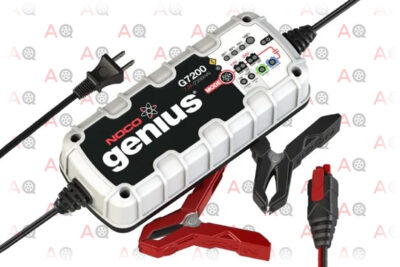
Editor’s Rating:
Features at a Glance
- Works with 12-volt and 24-volt batteries
- Works with lead-acid, lithium, and AGM batteries
- Has a repair mode
- Has spark and reverse polarity protection
- Comes with clamps and permanent leads
- Fully automatic
What Makes It Noteworthy?
The NOCO Genius holds up to its name: it’s genius. Ok, fine, that was a cheap shot, but this thing is smart. It can repair dead batteries just by plugging them in and it has tons of safety features to make sure you don’t hurt yourself or the battery. It automatically detects the type of battery you are trying to charge. In order to do that, it’s got a bunch of tiny computers crammed into it, hence the “genius.”
The design is nice too. It’s compact, but has long leads. Instead of being a wall brick, it uses a power cord, so it’s not as compact as the ultra-small Tender Junior. Although it’s slightly bigger than the smallest versions, it is still more than small enough to fit in a tool drawer. It comes with the quick connect leads for the battery too, so you can install permanent leads on the vehicles you care most about and plug them right into the device.
The only issue is that it won’t charge your 6-volt batteries. For those batteries, there is fortunately another NOCO on this list capable. This version, however, will charge your 24-volt systems. If you have an old diesel tractor or truck, that’s a great thing. If you like easy, convenient, and robust systems, you should grab one of these.
Pros
- Can charge almost any battery
- Automated and easy to use
- Very feature-rich
- Fast
Cons
- Can’t charge 6-volt batteries
2. Best Budget Battery Maintainer: Battery Tender Junior

Editor’s Rating:
Features at a Glance
- 12v lead acid and AGM only
- Overcharge and reverse polarity protection
- Self-monitoring, only turns on if needed
- Comes with clamps and permanent leads
What Makes It Noteworthy?
Battery Tender is a name you will see a lot on this list. That’s because they are one of the biggest players in the battery maintainer market. In fact, their name is pretty synonymous with the style of charger. If you walk into any auto parts shop and ask for a “Battery Tender,” they’ll give you whatever float charger they have in stock.
What that tells you is that even their cheapest and most basic unit, this Battery Tender Junior, is still great quality. It can only do 12v conventional batteries, and the wall wart design is sort of chunky. In terms of ease of use, though, it’s unrivaled. You plug it in. There’s no button to push, and the built-in protection will prevent you from hurting the battery. If you plan on leaving it long term, it has permanent leads you can attach to the battery.
If you have a lot of vehicles then purchasing several of these inexpensive units is perfect. They are a lot cheaper than buying a multi-station unit like the 4-bank Tender on this list, and there are some that are pushing 8 years old still working every day. If you have funky batteries, though, check out the NOCO Genius1 we recommend. It’s more or less functionally the same as the Junior. It just has a button for selecting a variety of batteries and costs more.
Pros
- Inexpensive
- Very compact and easy to use
- Automatic shutoff for reverse polarity or overcharge
Cons
- Only good for conventional batteries
- Slow at charging
3. Best Solar Battery Maintainer: Battery Tender Solar
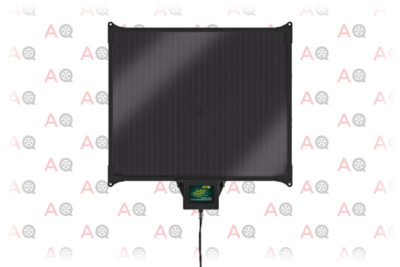
Editor’s Rating:
Features at a Glance
- Solar
- Weatherproof
- Overcharge and reverse polarity protection
- 12v lead acid and AGM only
What Makes It Noteworthy?
There are four products from Battery Tender on this list. This one is special because it is powered by the sun. That’s really awesome because sometimes you have vehicles in places where power lines are not. If you are out on the trails and worried that your Overlanding rig might have a power gremlin, attaching one of these to the secondary battery can be a lifesaver.
The Battery Tender Solar has all the same features as the Junior on the list, it’s just slower. It might even be simpler to use. You only have to clip it to the battery, you don’t need to plug it in.
There are downsides. For as neat as solar panels are, they are mighty useless in places where there’s no sunlight. Second, they are more expensive. We have a less expensive solar float charger on the list here, but it is still more expensive than the Tender Junior. It’s also slower and more fragile. Finally, it can only charge 12v. That’s basically just a solar power thing. Most solar panels are 12v or 24v, so a solar charger can rarely handle higher voltages.
If you have an old tractor that sits in the field, or an off-road 4×4 you leave outside, then this unit really is the most convenient thing you can buy to make sure it starts every time without requiring shore power. That alone makes it worth the few extra bucks.
Pros
- Solar-powered
- Overcharge and reverse polarity protection
- Weatherproof
Cons
- A bit expensive
- Only good for conventional batteries
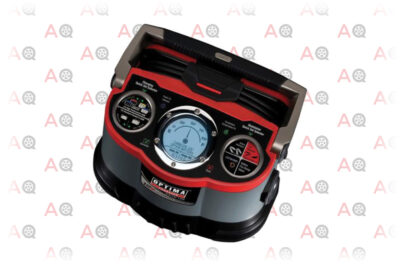
Editor’s Rating:
Features at a Glance
- Full diagnostic capabilities
- USB charger for smartphones
- Doubles as a full battery charger
- Recovers dead batteries
- 12v lead acid and AGM only
What Makes It Noteworthy?
The Optima 1200 is a gigantic, fully- featured beast of a battery maintainer. Partly because it’s way more than just a maintainer. It’s also a charger, a conditioner, a diagnostics station, and a battery recovery center.
Optima is a huge name in the motorsports world. They are well known for making robust, battle-ready batteries. It’s not very surprising that they make a maintainer that’s over the top in terms of construction and function.
Unfortunately, that comes at a high price. If you don’t need the highest quality system out there, you won’t benefit from the extra dollars you have to put down. You can even get a maintainer with diagnostic tools cheaper, and it still has the Optima label on the face. Just grab the Optima Digital 400 on this list instead. It won’t charge a battery fast or restore a very dead battery, but it will diagnose and maintain just fine.
If you have invested in some really expensive batteries, then it’s worth having an expensive conditioner/maintainer to keep them in top shape. Optima 1200s sit around 300 bucks, but it’s still cheaper to buy a maintainer than let an expensive battery go bad.
Pros
- Can diagnose and repair batteries
- Fully automatic
- Fast charging
Cons
- Expensive
- 12v Only
5. Best Multi-Type Battery Maintainer: NOCO Genius1
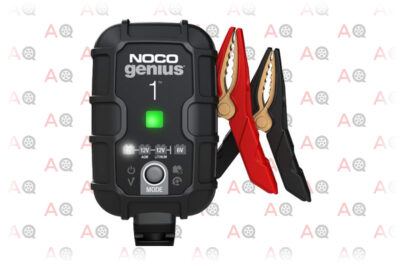
Editor’s Rating:
Features at a Glance
- Can handle 6v or 12v batteries
- Can handle lead acid, lithium, and AGM batteries
- Has a force charge mode for batteries that are too low for autodetection
- Overcharge and reverse polarity protection
What Makes It Noteworthy?
NOCO makes a great product, and like its bigger brother on the list, this Genuis1 is no exception. It automatically detects the type of battery you have, automatically selects a charging mode, and can bring batteries back from the dead.
What really sets it apart is the fact that it’s rated for anything. 6-volt 65 Beetle? No problem. Marine battery on a hovercraft? Sure. Gel cell on a 3-wheeler? Just hook it up and plug it in. You can even use it for unusual and one off applications with its “force” mode, allowing it to charge regardless of what it detects.
The Genius1 is a little slow. With only one amp at its disposal, it won’t keep up with the bigger units like the Tender Plus. That’s not an issue if you primarily want a maintainer and won’t be relying on it for charging. If you do want a NOCO that’s fast, they sell everything from a GENIUS2 to a GENIUS10, although at a higher price. That’s why we linked the Genius1 here. It’s the perfect compromise between the price of small units like the Tender Junior and the functionality of units like the G7200.
Pros
- Can charge a variety of batteries, including 6-volt
- Can restore dead batteries
- Very easy to use
Cons
- Slow
- Cables are on the short side
6. Easiest-To-Use Battery Maintainer: Battery Tender Plus
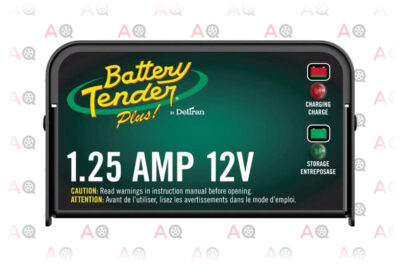
Editor’s Rating:
Features at a Glance
- 12v lead acid and AGM only
- Fast charge capable
- Overcharge and reverse polarity protection
- Long leads and cords
- Includes leads that can be installed permanently on battery
What Makes It Noteworthy?
We know, another Battery Tender. We weren’t lying when we said they were one of the most prominent players on the market. This one, the Tender Plus, is more expensive than the Junior and has no extra functions. It’s not compact, it doesn’t have a crisp LCD screen like the Optima, and it can’t handle any unconventional battery. It’s just a small box with some lights on it.
What it can do, though, is plug in and be forgotten about for years. It has automatic maintenance. Unlike the wall wort varieties of float chargers, you can hide the box inside the engine compartment. It’s also fast; if you have a dead battery, it can bring it back to 12v faster than almost everything else on this list. That makes it really nice to have around if you aren’t sure of your batteries’ state. You could hook up this unit and know that you’ll have enough juice to start in a few hours, even if the battery was more dead than you thought.
The nicest thing about the Plus is the ease of use, part of Battery Tender’s core philosophy. Other things that set the Plus apart are the big friendly clamps and lights on the front. It’s hard to understand without seeing it in person, but many of these devices have tiny letters or screens and dim lights that are hard to see. The Plus has one big light for charging, one big light for charged, and that’s it. If you value simplicity and speed over everything else, the Plus is worth the price.
Pros
- Ridiculously easy to use
- Non-wall wart design leads to a lot of plug-in options
- Faster than similar maintainers
Cons
- Only good for conventional batteries
- Low on features
7. Best Multi-Bank Battery Maintainer: Battery Tender 4-Bank

Editor’s Rating:
Features at a Glance
- 4 chargers in one
- Fully automatic
- 6v or 12v
- Overcharge and reverse polarity protection
What Makes It Noteworthy?
Just take everything good we said about the Battery Tender Plus and multiply it by four, because that’s more or less exactly what this is. It’s an easy to use charger that can handle 6v or 12v batteries, and it has all the safety features you expect from Battery Tender. It just has four sets of leads instead of just one.
That’s fantastic if you are space limited or don’t want to take up multiple outlets. It’s especially great if you have a bunch of batteries out of the vehicles they power. Just pile them up and hook them to the device. The automatic maintainer will keep them ready to go forever. If you have more than four vehicles, then we have good news: you can get a 5 unit bank, or a 10. That’s 10 battery chargers in one box.
The price will keep you from going crazy with banks, though. It is cheaper to just buy a handful of smaller units than a multi-bank unit. That seems wrong, but it’s true. Especially since functionally the Junior we mentioned earlier is identical. The multi-bank charger just can’t be beat for cleanliness and convenience, however. You pay more, but you won’t be tripping over the nest of extension cords and bricks lying around everywhere.
Pros
- Can charge 4 batteries at once
- Has advance protections
- Very easy to use
Cons
- Only good for conventional batteries
- More expensive than buying 4 Battery Tender Juniors
8. Best Budget Solar Battery Maintainer: TP-Solar 10 Watt

Editor’s Rating:
Features at a Glance
- Solar
- 12v lead acid and AGM only
- Overcharge and reverse polarity protection
- Waterproof
What Makes It Noteworthy?
The TP-Solar charger is a maintainer that is simply a very inexpensive solar charger. It doesn’t have the build quality, and it lacks the power that the Battery Tender mentioned elsewhere does. It is less than half the price, though.
That lack of quality shows up in a few ways. The leads are thin and wimpy. The panel itself doesn’t have the same charging speed despite being a similar size to others. If you are just leaving it in a field to maintain the battery on an old tractor, you won’t notice, but it won’t ever charge fast enough to save a dead battery.
It does do a few things well, though. The kit comes with a lot of mounting and connection options, which is nice. It’s a great piece of equipment if you are the type of person that might forget it’s there and run it over. It’s durable enough to survive the incident and cheap enough to replace if it doesn’t.
Pros
- Inexpensive
- Weatherproof
- Has overcharge protection
Cons
- Only good for conventional batteries
- Very slow
9. Best Multi-Function Battery Maintainer: Optima Digital 400
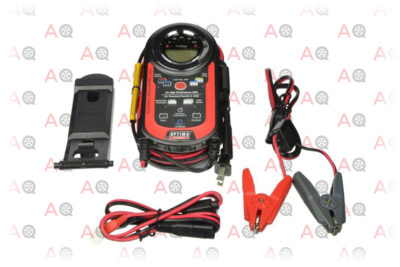
Editor’s Rating:
Features at a Glance
- 12v lead acid or AGM only
- Fully automatic
- Built-in diagnostic tools
- Wall mount
- Battery recovery function
What Makes It Noteworthy?
The Optima Digital 400 really is just a more compact, slightly slower sibling to the Optima 1200 we mentioned earlier. It has a lot of the same features. It’s also a charger, it also does diagnostics, and it also has an easy-to-read LCD display.
It’s half the price, though, and it’s super compact. Unlike the 1200, the 400 will fit in a standard toolbox. It also has a wall-mount and super long leads, although the wall mount seems a bit flimsy. If you need a benchtop permanent shop feature, the 1200 is better.
There are some downsides. First, like the other Optima on this list, it’s made for Optima batteries. If you have unconventional batteries, things like the NOCO 7200 are the same price and a better fit. The other issue is that it’s a bit harder to use. Almost everything else on this list strives to be as easy to use as possible. Not the Digital 400, it’s got tons of buttons and dials, and it demands information from you. That’s not a bad thing if you want to get the most out of a battery, but it is bad if you just want a device you can plug in and forget.
If you only want to buy one device to be a compact charger, diagnostic tool, maintainer, and battery recovery tool, though, here it is, especially if you run higher-end batteries. Like we said before, it’s way cheaper to buy a solid battery tool than buy a brand new performance battery.
Pros
- Automatically detects voltage and chooses charging style
- Doubles as a multimeter
- Can recharge very drained batteries
Cons
- A bit complicated
- Can only charge 12v batteries
10. Orion 12v Automatic Charger

Editor’s Rating:
Features at a Glance
- 12v lead acid and AGM only
- Overcharge and reverse polarity protection
What Makes It Noteworthy?
Let’s be honest, there’s only one thing noteworthy about the Orion 12v, it’s low price. It’s simple enough to use, you plug it in and clip it to the battery. The LED is dim, though, and it’s not easy to read and understand like the Tender Plus. The leads are short and thin, and it definitely wouldn’t survive too much abuse.
It will maintain your battery, though. If you just need a cheap product that will keep your battery topped off, it’s fine. At the very least, the Orion makes a good backup. If you buy a solar charger like the TP, throw one of these in your kit just in case it’s cloudy.
Pros
- Inexpensive
- Easy to hook up
- Fully automatic
Cons
- Only good for conventional batteries
- Quality isn’t great
All About Batteries and Chargers
The idea behind a battery maintainer is that they keep your batteries ready for use when you need it. To get the most out of a maintainer, you should know about batteries and battery chargers.
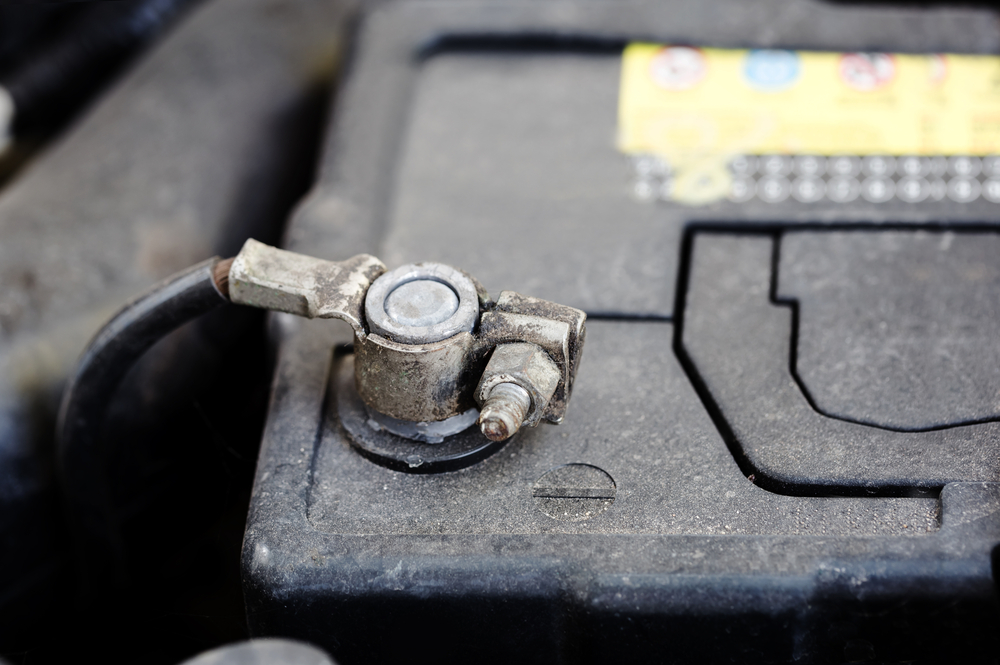
Types of Batteries
There are a variety of battery styles, and some chargers won’t work with certain types. If you are not sure what type you have, or what options you have for battery, it can be challenging to choose the best charger. So let’s talk about the different types.
Voltage
Voltage is really straightforward, since there are really only 3 options. 6-volt batteries are found on small vehicals and old machines and cars. 12-volt is standard, and 24-volt is rare. You might see a 6-volt system if you go to a car show that has restored classic cars, especially Volkswagens. 24-volt systems are used in heavy equipment.
Since 6-volt and 24-volt systems are rare, it’s uncommon for battery chargers to accommodate them. If you need, the NOCO Genius1 and NOCO G7200 charge 6 and 24, respectively. Most of the time, though, a 12-volt charger is just fine.
Lead-acid, Lithium, AGM, and Others
There are actually a lot of different battery types on the market. The biggest variable is cost. Once you start deviating from the standard flooded type, they tend to get more expensive. The following are the most common:
- Standard/Conventional/Flooded/Lead-Acid: These are your standard, everyday car batteries. They go by a lot of names because everyone wants to call them something different, but it’s safe to say that most cars have them. They use lead plates and acid to store electricity. The acid is a liquid and can splash out or evaporate, which will kill your battery. Since they are the most common, any charger will handle them. That includes the super cheap Orion on our list.
- AGM (Absorbent Glass Mat)/Dry Cell/Gel Cell: AGM batteries use the same technology to store energy as standard flooded batteries. They just have a medium that absorbs the electrolyte so it can’t spill out. That means two things: you can mount it on its side without spilling, and it can handle slightly higher demands. They are more expensive. It’s better to use a high-quality charger like the Tender Plus to keep them charged just to protect your investment.
- Lithium-Ion: Lithium batteries are the most advanced design on the market. They are used to power electric cars, cell phones, remote-controlled planes, cameras, and other devices requiring specific electricity storage demands. They have the best capacity at the lowest weight, which makes them perfect for performance vehicles. They cost a lot and need special chargers, like the NOCO G7200. If you want to learn more about these newest batteries, let Road and Track fill you in. They have a great write up
- Optima Proprietary Technology: Optima does its own thing with its batteries. Usually, you’ll only find these in machines that people expect more performance out of, like a work truck or race car. On the surface, an Optima “six-pack” battery is just a fancy AGM battery, but they build it to their own specs. To make it easy, they also have their own line of chargers and maintainers, like the very reasonable Digital 400 we recommend.
Deep Cycle
When you see the words “deep cycle” on a battery, the battery is designed to be discharged entirely before being recharged. Boats, golf carts, hydraulic lifts, and other vehicles that operate for prolonged periods of time using an electric motor use deep cycle batteries to have ample power on hand at all times. It isn’t a style on its own, but it still takes a special kind of charger. Generally, only more expensive, heavy-duty chargers like the Digital 1200 on the list can maintain a deep cycle battery.
Types of Battery Chargers
In addition to the types of batteries, there are a lot of different kinds of battery chargers. Many of the ones on our recommendation lists are actually combinations of various types, like the do-all NOCO G7200. Since companies often combine different types, it’s helpful to know what they are so you can safely ignore the extra features if they don’t apply to your situation.
- Trickle Chargers: A trickle charger is one of the most simple chargers on the market. It uses a small amount of current to continuously charge a battery. Every maintenance charger is also a trickle charger, but not vice versa. There are trickle chargers for low feed applications that have no shutoff. Overcharging your battery will kill it, as the Chicago Tribune can tell you.
- Float or Maintainance Chargers: These are the devices talked about on this entire page. They use basic circuitry to keep a battery charged. Batteries lose voltage over time to the air, so it’s important to periodically charge them up. However, it’s bad for a battery to be overcharged. A float charger maintains the battery by keeping in a range of voltages. The solar chargers on our list, like the Battery Tender Solar, are strictly float chargers.
- Smart Chargers: Smart chargers are float chargers that use computers to better maintain a battery. With the extra intelligence, smart chargers can handle a wider range of batteries and have better protections against overcharging. Many can also handle a larger amperage than the standard float charger, which allows them to double as a standard charger. The NOCO Genius1 is an inexpensive smart charger that works great on a huge range of batteries.
- Standard Battery Chargers: Standard battery chargers are just run of the mill chargers. They use high amperages to charge your battery quickly. They are not meant to be plugged in for long periods of time, and they are not meant to maintain a battery. Sometimes they include a car start option, which is similar to jumping your car. It gives the battery a large amount of current so that you can crank the motor over and hopefully have the alternator take over charging duties. The Battery Tender Plus is a fast charger and a float charger combined into one. If you’re looking for a quick charger, you can see our top 10 list here.
- Reconditioning Charger: A reconditioning charger has to be all other types at once. They use microcontrollers to slowly recondition a dead battery. They start with pulses of power, then feed constant low current, then finish off with higher current before settling on floating the charge for long periods of time. It’s expensive, but nice to have if you deal with a lot of batteries. The Optima 1200 on our list is one such charger. Nothing can save a battery that has corroded or lost too much electrolytic fluid, but a reconditioner can give you the best chance at saving an otherwise dead battery.
Slow vs. Fast Charging
As a general rule, charging slower is better for the life of the battery. The lower amperage allows the battery to store energy gradually and keep the heat low. That doesn’t do you much good if you need power soon. Most maintenance chargers are very slow; they are built to preserve the battery. There are some faster ones, like the Battery Tender Plus and the NOCO G7200, but they’re still not instantaneous.
Since small solar panels are low amperage by default, chargers like the TP Solar will always take a long time to recharge a battery. Again, that’s totally fine for maintaining a battery. Still, you won’t want to wait around for it to charge a dead battery. How do you know if your battery has goon completely kaput? Use a battery tester to make sure it’s still (somewhat) functional.
Get Charging
Battery chargers have advanced a lot over the last decade. It’s easy to get one that maintains, charges, rebuilds, and conditions any battery. They are easy to get, and they are even easier to use. There’s no excuse. Get one for any battery you have that you need to rely on. That way, you are always ready to hit the pavement…or dirt, or gravel, or snow, or plow a field, or whatever it is you do.


